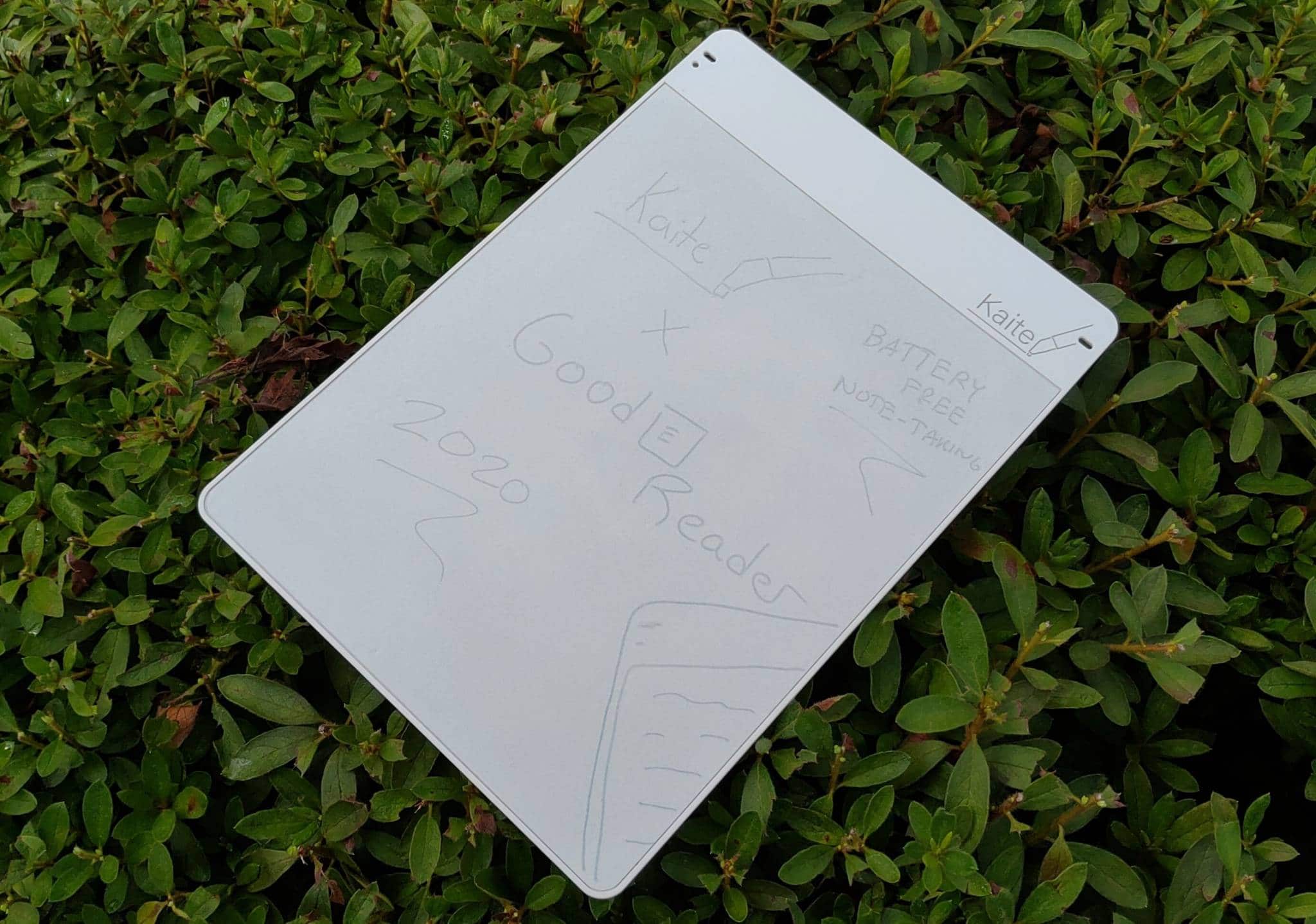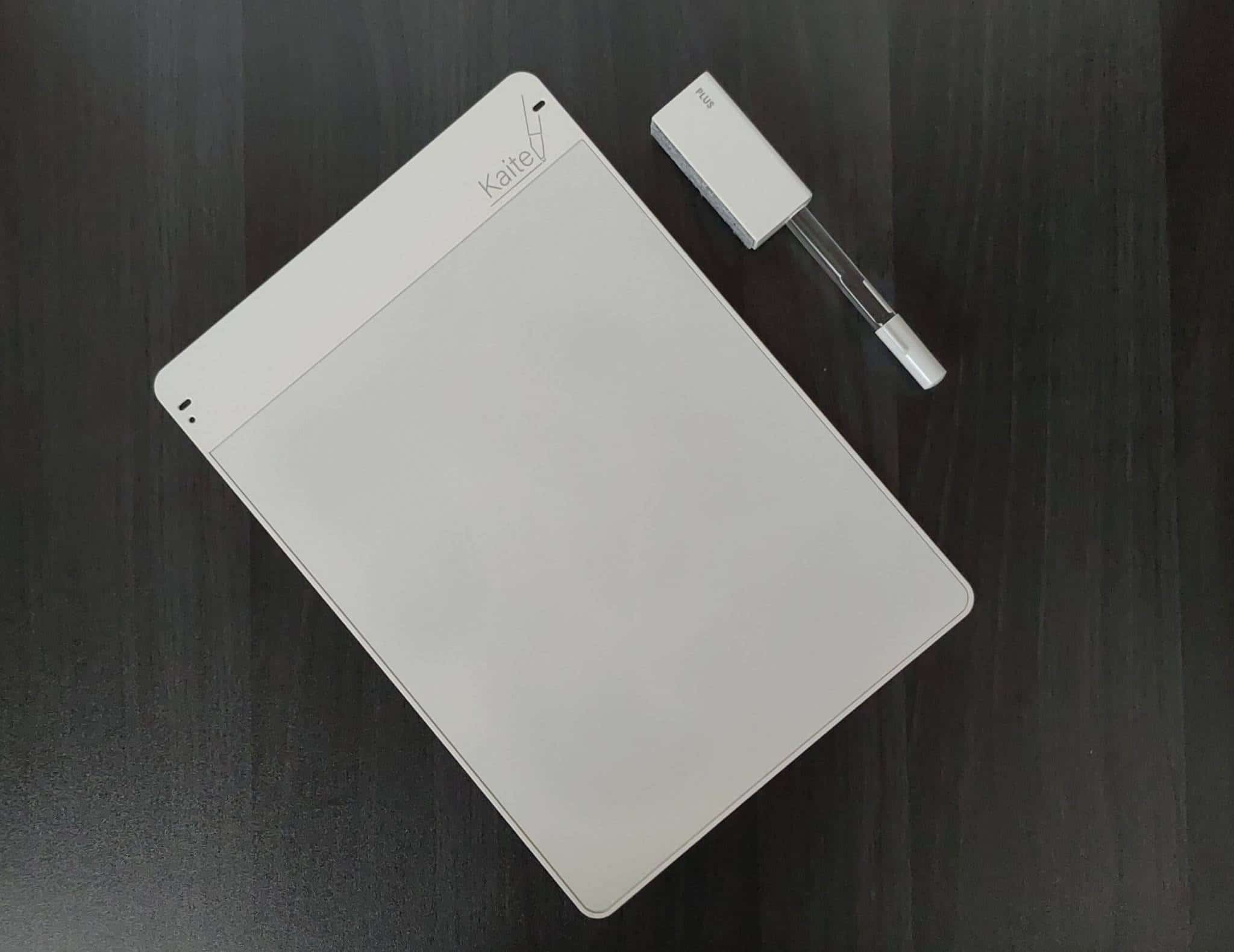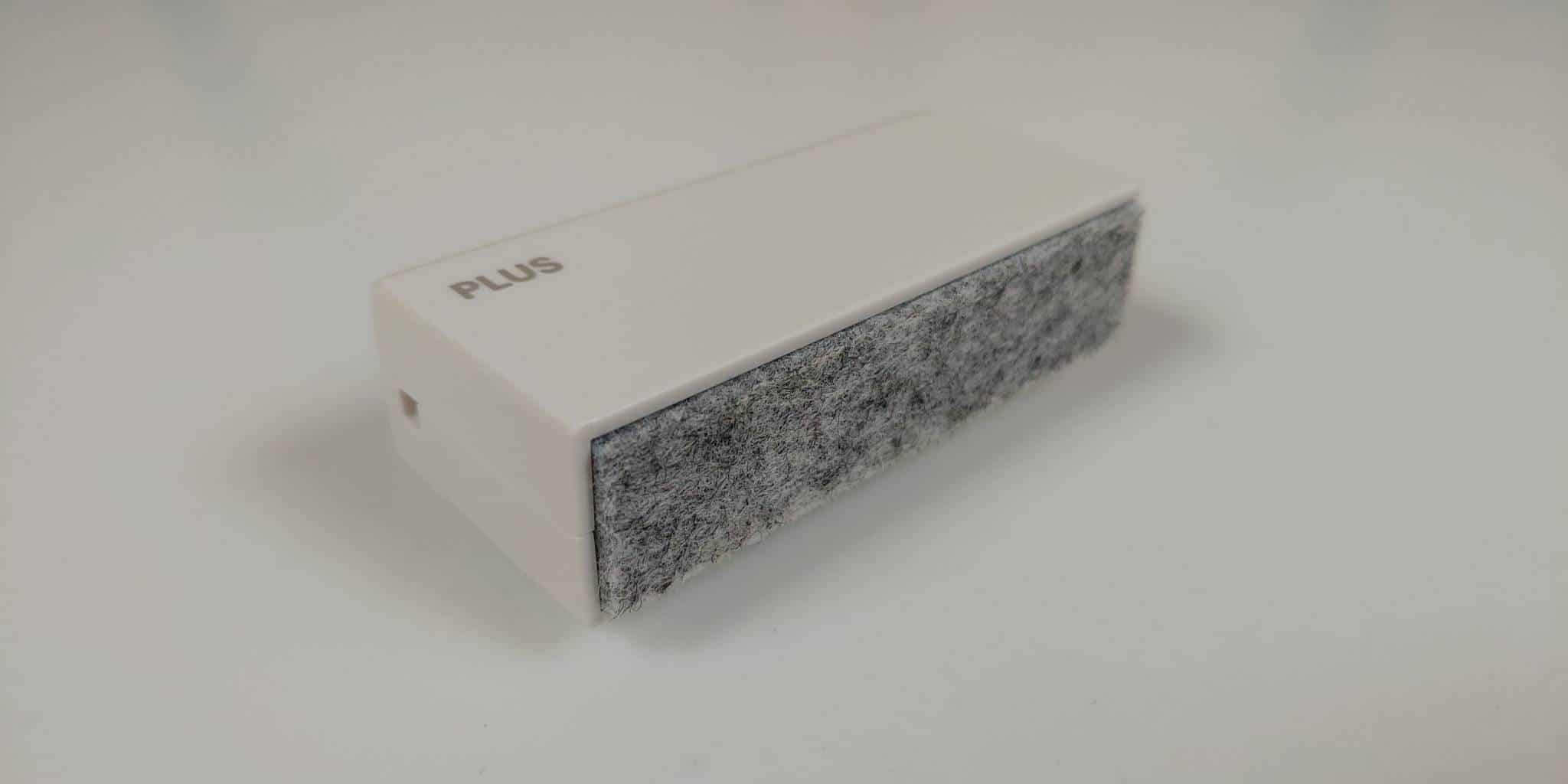
The Kaite 2 is quite a different product than the standard e-note or e-reader. Since it does not have a battery, it is easy to order from countries that have battery restrictions and are flagged as dangerous goods, ordering it is quick and easy. This giant 13.3 inch device can be drawn on with a stylus and content can be deleted with the accompanied eraser. Once you install the Kaite app for Android or iOS, you can save your content locally, or send it to whatever cloud store solution you have on your smartphone or tablet.
Hardware

The Kaite 2 features a 13.3 inch E-paper screen and does not have a battery. This makes it a very environmentally friendly and economical tool, as it does not consume items like paper or ink. There is a magnet at the top that houses the double sided stylus, one side does thick lines and the other are thin. There is an eraser cap that you can attach to whatever side you want, to remove things from the screen. It also ships with a dedicated eraser, with a pen holster on it. The eraser also has a clip on it, so you can attach to your device.

The stylus is easy to hold and has a little bit of grip on it. To write clearly with the stylus, the magnetic tip needs to be placed properly onto to the writing surface. An ”angled-tip design” eases the pencil positioning and facilitates the writing process. So how does this screen technology work? Micro iron particles in contained in tiny micro capsules are all over the screen and are attracted by the pencil’s magnetic tip, creating a clear and natural writing experience. When you are using the stylus, if you draw slow, you get thin or thick lines, but if you are drawing very lightly or fast, the lines get lighter. The stylus does not have any pressure sensitivity.

When it’s time to start removing some errant line or if you just want to remove something from the screen, you can use the eraser. There is a dedicated erasing tool and also a tip you can put on either end of the stylus. Erasing functions like an opposing magnet, putting the particles back into a rested state. The dedicated eraser is great to remove a general area, where the erasing tip is more practical for removing something small.
This is a simple drawing pad. It doesn’t have any internal storage or a processor, or any RAM. You cannot save any of the drawings to the root of the device, instead you need to download the Kaite app for Android or IOS to your smartphone or tablet. You basically use your devices camera to take a picture of it, and it will give you a high resolution image. Next, you can save it as a graphic file, and then save it to your phones/tablets internal storage, or send it to your favorite cloud solution like Dropbox, Onedrive, or Google Drive.
The dimensions are 297 x 211 x 3 mm and it weighs 230g. It is very thin and light, easy to hold with one hand. Very portable, you can easily through this into a bag, briefcase or backpack and not worry about damaging the screen. What I like about the design is that the edges are round, and not squared, so it is easier to hold.
Wrap up

The Kaite 2 is available from Good e-Reader for $99, which puts this on impulse buy terrority. It is a very interesting writing notepad, I think it is perfect for people who just want to doodle, layout their thoughts or have it sitting next their PC and jotting down notes.
To be honest, this device is really solid. It showcases a different approach towards making notes or drawing. Since it doesn’t have a battery, it is easy to ship and order from every country in the world. I would recommend it to people who are on the fence about whether they want to buy a more expensive enote and whether they will actually use it, day to day. 13.3 inch products are normally very expensive because of the fast processors, RAM, SD support and E INK screens are not cheap. So if you are thinking about purchasing a Remarkable 2, Sony DPT-RP1, Fujitsu A4 or anything else, pickup the Kaite 2.
Michael Kozlowski is the editor-in-chief at Good e-Reader and has written about audiobooks and e-readers for the past fifteen years. Newspapers and websites such as the CBC, CNET, Engadget, Huffington Post and the New York Times have picked up his articles. He Lives in Vancouver, British Columbia, Canada.
